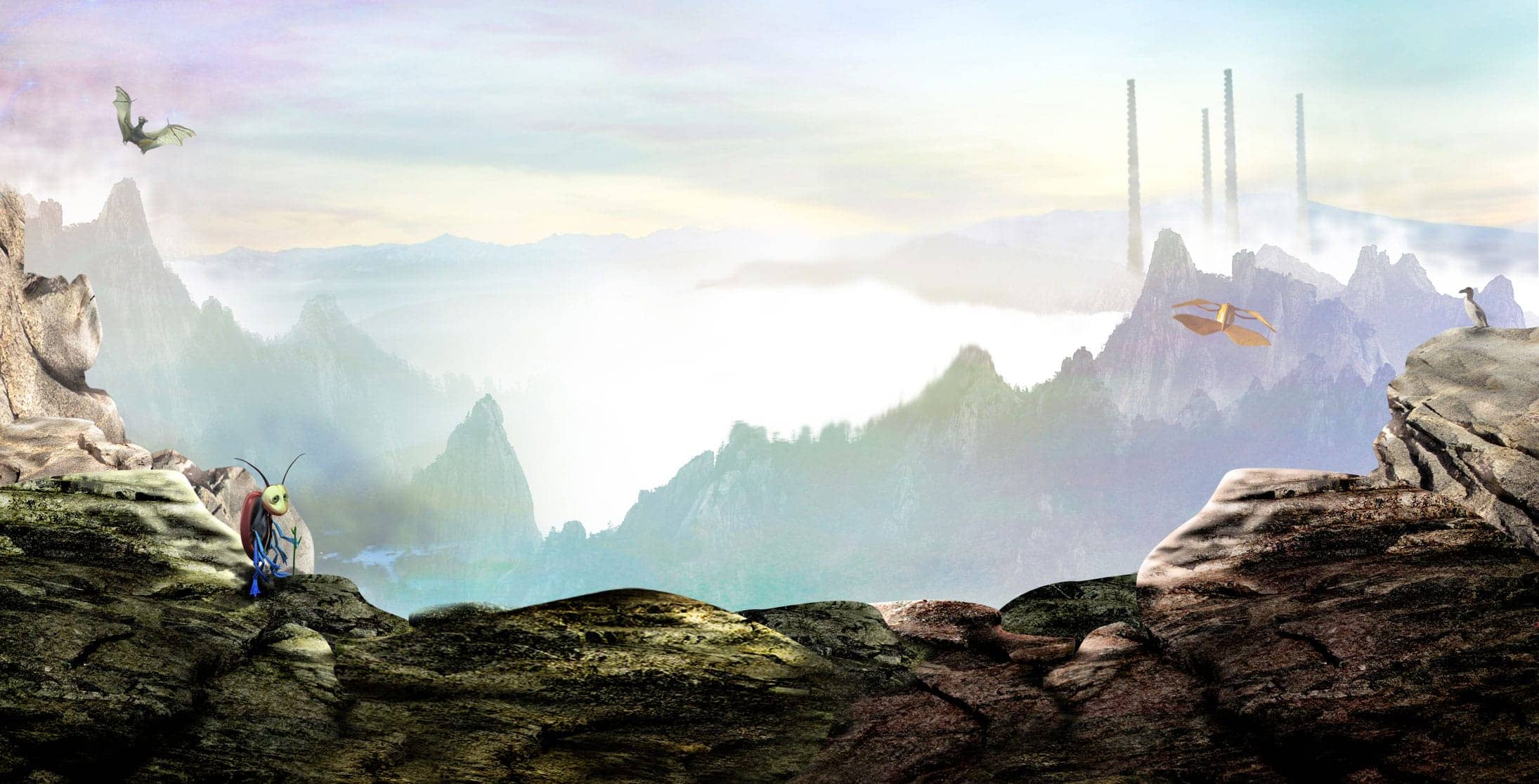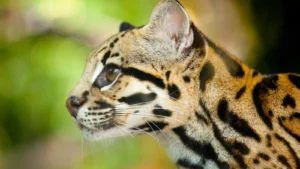At Rockford’s Rock Opera, we often explore the stories of unusual and endangered animals. The margay is one such species, little known, yet extraordinary. With its acrobatic tree-climbing skills and clever hunting strategies, it’s a perfect example of the secrets nature holds. By learning about the margay, we not only celebrate a remarkable animal but also highlight the urgent need to protect the forests it calls home.
What is a margay?
The margay (Leopardus wiedii) is a small wild cat found in Central and South America. Similar in appearance to the ocelot but smaller, margays weigh only 2.5–4 kilograms and grow up to 79 centimetres long, with a tail almost as long as their body. Their large, round eyes are adapted for night vision, making them expert nocturnal hunters.
Where do margays live?
Margays inhabit dense tropical forests, from southern Mexico through to northern Argentina. They are highly arboreal, meaning they spend most of their lives in trees. Unlike most cats, margays can rotate their hind legs 180 degrees. This unique ability allows them to climb headfirst down tree trunks, hang from branches with just one hind foot, and leap up to 4 metres between trees.
What do margays eat?
Their diet includes birds, frogs, lizards, insects, and small mammals such as monkeys and squirrels. They are intelligent and opportunistic predators. In Brazil, researchers observed margays feeding on bats caught in mist nets. Field researchers and Amazonian inhabitants have also reported margays mimicking the cries of tamarin pups to attract adult pied tamarins close enough to ambush. This rare behaviour shows just how resourceful they are.
How do margays compare to other small wild cats?
This cat is often confused with its close relatives, the ocelot and the oncilla. However, its extraordinary climbing skills and flexible ankles set it apart. While house cats can climb trees, margays are true masters of the canopy—more like squirrels than felines.
Do they live in groups?
Adults are mainly solitary and live at low population densities across their range. This makes them harder to spot in the wild, but also more vulnerable to threats that shrink their territories.
Why are margays endangered?
Margays are currently listed as Near Threatened by the IUCN. Populations are predicted to decline by 30% over the next three generations (about 18 years). The main reason is habitat destruction: forests are being cleared and converted for agriculture, cattle pasture, and infrastructure. In the past, margays were also hunted for their beautiful spotted coats.
Can you see a margay in the UK?
Although margays are native only to the forests of the Americas, you can see one in the UK at Shaldon Wildlife Trust in Devon. In October 2024, a margay kitten named Juliet was born there, the first in many years. Juliet and her mother, Lucia, are part of a breeding programme to help conserve this rare species.
 The margay’s lesson for us
The margay’s lesson for us
The margay’s survival depends on the survival of its forest. Its astonishing adaptations remind us of the many secrets nature still holds. Protecting margays is not just about saving one cat, it is about safeguarding entire ecosystems.
At Rockford’s Rock Opera, we tell stories about extraordinary creatures and the lessons they can teach us. Our audiobook Lost on Infinity is a tale about extinction, hope, and the last one of every species. You can read the book, listen free on Apple, or explore our free teacher resources.
🌿🍃🌼🌿🍃🌼🌿🍃🌼🌿🍃🌼🌿🍃🌼🌿🍃🌼🌿🍃🌼🌿🍃🌼🌿🍃
Discover more through story and song
At Rockford’s Rock Opera, we believe nature’s resilience can inspire both science and imagination. Our story Lost on Infinity explores extinction, biomimicry, and the secrets of the natural world through an unforgettable musical adventure.
Explore our world today:
Get the Lost on Infinity illustrated book with free musical audiobook – a totally immersive experience.
Listen to the first part of the Lost on Infinity audiobook and watch the animated adventure free on Apple App Store and Google Play.
Download our FREE lesson plans and slides about Extinction and Biomimicry. We also have a selection of classroom activities on our website.
For even more exploration of the natural world, tune in to our Stories, Science & Secrets podcast for kids. Join Matthew, Elaine, Steve Punt and special guests, as we delve into the fascinating world of biomimicry and the inspiring ways science learns from nature’s genius.
The coconut reminds us: resilience is a natural design. Biomimicry (learning from nature) is a fascinating classroom topic. You can read more about biomimicry and see all the discoveries we have documented in our Creatures’ Secrets Database.




 The margay’s lesson for us
The margay’s lesson for us